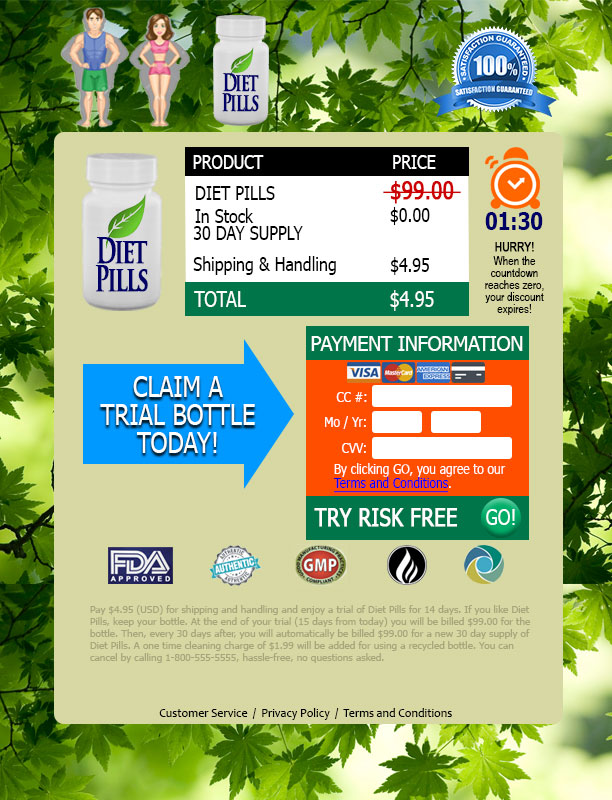Business Guide to Online Trial Offers, Product Memberships, and Negative Options
Guide for Businesses
When a business advertises using the word "free" or other words of similar meaning, it triggers the application of Utah Admin Code R152-11-4. "Other words of similar meaning" could include the words "trial offer" or a representation showing an item is $0.00 in an online checkout. Below is an overview of rules that may apply when representations such as these are made to consumers.
The most fundamental guidance from R152-11-4 is that when you represent something as being free, it must actually be free. In short, an item must not be advertised as free if the business intends to charge for it.
The Division has observed instances where businesses will promote a "free" item, "trial offer", or display an item as "$0.00" in the online checkout with a small shipping charge. The consumer will indeed checkout by paying a small shipping fee without paying for the item. However, after the 14 day trial, not only will the business charge for a new item shipped as part of the negative option, the business will also charge for the first item that was advertised to be free. This could be found to be a deceptive practice, and could represent an instance where an item was represented as free but was not, in fact, free. The Sample Website in section VIII shows what is explained above.
Even if a business discloses somewhere on the page that the consumer will have to pay for the item, it still may be deceptive to call it free or show a price of $0.00 elsewhere on the page. Items which require no upfront payment but may, if not returned, require payment should be advertised accordingly. An appropriate thing to do in that instance would be to list the actual price of the product and then note that upfront payment is not required.
When there are terms, conditions, and/or obligations that must be fulfilled to receive or keep the item, those terms must be "set forth clearly and conspicuously at the outset of the offer so as to leave no reasonable probability that the terms of the offer might be misunderstood." Utah Admin. Code R152-11-4B. Some websites observed by the Division used advertising that led the consumer to believe they would receive a free item simply for entering their personal information, with language such as "rush my order" on a link directly below the personal information. However, once the information is entered, the consumer is led to a checkout page with terms and conditions not previously disclosed. This is a deceptive practice because these terms were not laid out "at the outset."
Other websites, complying with the law, placed the information in a way that left no reasonable probability the terms might be misunderstood. See section II below for a discussion of rules governing clarity and proximity of advertising, and the sample website for an example of this.
The rules also contain requirements on the frequency of offers using the word free or words of similar meaning as well as what may be represented as the regular price of such an item. These rules are not the focus of this guide, but can be reviewed here.
The Utah Consumer Sales Practices Act identifies unauthorized charges by a supplier as potentially deceptive acts or practices. Unauthorized charges are specifically prohibited in Utah Code § 13-11-4(2)(r). A charge may be considered unauthorized whether it is for the entirety of the consumer transaction or a portion of a consumer transaction.
Businesses marketing products through trial offers and subscription enrollments should pay particular attention to ensuring the consumer actively agrees to all charges. The consumer's authorization to the initial transaction cannot be considered authorization for subsequent subscription-related charges if the subsequent charges are not adequately disclosed or separately agreed-to. An undisclosed charge may be considered unauthorized under the Utah Consumer Sales Practices Act because the consumer did not, and could not, agree to the charge. Suppliers should exercise caution when placing terms related to fees and charges in a "terms and conditions" link that the consumer may or may not see. Oftentimes suppliers make the mistake of attempting to charge restocking fees, additional shipping fees, and other fees with a lack of disclosure or inadequate disclosure. These activities can expose the supplier to liability under the Utah Consumer Sales Practices Act.
When a product being advertised is subject to material exclusions, reservations, limitations, modifications, or conditions, these must be displayed "clearly and conspicuously in close proximity to the words stating the offer." Utah Admin. Code R152-11-2 . Failure to do so is a deceptive act.
The key is to not hide, but rather to make clear, what a consumer is actually purchasing or agreeing to. The Division has observed businesses engaging in practices that technically disclose important terms, but fail to do so at the appropriate time, with sufficient conspicuousness, or in sufficient proximity. The effect is consumers taking on a significant monthly financial obligation without being aware of it. The Sample Website in section VIII shows what a site that fails to meet this standard might look like.
The Division has observed websites selling products through negative options failing to provide their material terms with sufficient conspicuousness or proximity. A common way that businesses fail to do this is by using links to terms and conditions rather than providing the key or material terms and conditions on the same page as the order form. A link to another page with terms and conditions is not "in close proximity to the words stating the offer." Other sites will contain a statement with appropriate material terms, but the statement is not visible in the area of the advertisement. It may be deceptive to require the user to look at the bottom of the page or scroll below the advertisement to find important terms. This may violate the rules as failing to provide the material terms "in close proximity" to the offer.
The terms of a negative option must, at a minimum, clearly and conspicuously note the existence of the negative option, state the total cost of the offer after the trial expires, and note any recurring monthly charges. To ensure clarity and delivery of these key terms, at least these material terms should appear on the same page of the offer and not beneath other text in a lengthy terms page. For example, the page could include a box that must be checked next to a statement "I understand that by clicking submit I will be billed $59.91 a month until I cancel. I also agree to the additional terms and conditions below." The Sample Website includes an example of this.
Disclaimers are useful tools in limiting advertising to intended audiences or describing terms that may apply to a deal. For instance, a car dealership may advertise an offer to purchase a car at a given rate and payment but that indicates "on approved credit." This disclosure appropriately limits the offer to purchasers who qualify for credit, and consumers with poor credit are on notice that they may not qualify for the deal.
A disclosure does not, however, cancel out misrepresentations in advertising. It is a deceptive act to "indicate that the subject of a consumer transaction has approval, performance characteristics, accessories, uses, or benefits, if it has not[.]" Utah Code § 13-11-4(2)(a). A disclosure subsequent to an online statement that the advertisement was not true does not eliminate the deceptive Act.
As noted in Section I, it is deceptive to advertise a product as free even if the terms and conditions state that it is not free. The Division has also seen returns advertised as "hassle free" or "no questions asked" when such was not the case. Some companies promised a process for cancellation that was more difficult than represented. Other times, a "14 day trial" was promised, but is actually only around seven days because the trial starts from the date of shipping rather than the date the consumer first receives the product. There are many other possible deceptive acts that need not be listed here. The key is that a limiting term, even if later disclosed, should not directly contradict with advertising.
Timers, counters, and other automated or static representations of scarcity that are not based in fact are deceptive. Utah Code § 13-11-4(1), (2)(a), (2)(d). Further, the use of such scarcity terms increases the probability that terms might be misunderstood since the business is attempting to limit the amount of time the consumer has to carefully read any material limitations of terms. Utah Admin. Code R152-11-4.
The following are examples of representations of scarcity:
- A counter showing remaining supply
- A clock counting down
- "High chance of selling out"
- "We cannot guarantee supply in the future"
- "Act now to secure your trial is not taken by someone else"
If these statements are not actually true, the advertising is deceptive and violates the law.
A business should only represent a sponsorship, approval, or affiliation that actually exists. Utah Code § 13-11-(4)(2)(i). Such a representation could be either overt or implicit. For example, the Division has observed websites that the use the logos of other well-known businesses. These logos imply a sponsorship, approval, or affiliation. In investigation, the Division often observes that the website has no relationship with the well-known business. The Division has also observed logos for federal agencies placed on the website such as the FDA, FTC, USDA, USPTO, and others. The use of these logos is not only most likely directly prohibited by the agencies, it could be a deceptive indication of sponsorship, approval, or affiliation.
The Division has observed many websites selling negative options using statements or seals to represent a trial is "risk free", a "money-back guarantee", or a "satisfaction guarantee". These are an offer of a guarantee and are subject to Utah Admin. Code R152-11-2 and Utah Code § 13-11-4(2)(j). The Utah Consumer Sales Practices Act prohibits indicating that an item has a warranty or particular warranty term, if such is not the fact.
Blanket statements to consumers such as "risk free" or "100% satisfaction guarantee" send a message to consumers that they may enter into the transaction with the business without risk of losing any of their money paid. In the absence of such a broad promise without clear limiting terms in close proximity, businesses using these statements should be prepared to make a full refund at any time to consumers who make a refund request for any reason, without conditions such as inspecting the product or refusing to refund because the product is non-defective. Further, unless conditions are clearly and conspicuously disclosed, businesses making such broad promises should not require consumers returning product to pay return shipping, pay for certified returns, charge a restocking fee, issue partial refunds based on product used, or refuse to accept returns after a trial period. Doing so could constitute a deceptive practice. Businesses that are not intending to make such broad commitments should not make blanket guarantee statements in online advertising.
Businesses selling products, negative options or otherwise, are subject to Utah Admin. Code R152-11-10. A few general rules come into play:
- A business can set its own refund policy. To do so, the refund policy must be disclosed to the consumer as required by Utah Admin. Code R152-11-10.
- If a business has not set a refund policy and appropriately disclosed it, new items purchased over the phone must be refunded if a refund is requested by a consumer.
- After a valid request from a consumer, the business must make a full refund within 30 days.
- A restocking or other fee cannot be charged unless such a fee is clearly disclosed.
Failing to comply with these provisions will constitute a deceptive practice. The Division commonly observes deceptive practices with regard to refunds in trial offers and/or negative options. A few of these include:
- Charging a previously undisclosed restocking fee
- Providing only partial refunds on returns of trial items
- Imposing unreasonable procedures to return the product
- Call center employees refuse to provide return codes or place callers on hold for unreasonable amounts of time
Businesses must take care to ensure that they either clearly disclose the fact that the product is non-refundable or that other terms or conditions apply, or provide full refunds for any return of new product. Where statements "hassle-free returns", "no-questions asked", and others are made by the business, they must actually be true or the statement is deceptive. Utah Code § 13-11-4(2)(a).
The Sample Website shows a hypothetical sale of an online diet pill negative option program. These screenshots will highlight several of the deceptive practices discussed above. The hypothetical website leads a consumer to believe that he is receiving a bottle of diet pills for only the cost of shipping. In reality, the consumer is billed $99.00 plus $4.95 shipping for the first bottle of pills and $99.00 including shipping in subsequent months thereafter.
The first and second image shows the checkout page from a hypothetical website. The first page represents what is shown to the consumer as the consumer enters the site. The second page shows the webpage when it is scrolled down and the terms contained there. The third page shows a variation of the site with a different, but also deceptive, approach to disclosing terms and conditions through a hyperlink. The last page shows what could be a commercially feasible way to communicate the important terms of a negative option to a consumer without engaging in deceptive advertising.
The final image is not meant to show compliance with any other state or federal law including FTC and FDA regulations. The Division does not endorse, support, or encourage the sales of diet pills or the use of negative options in sales, but is simply showing what may constitute deceptive practices. The use of branded logos on the sample websites is for education purposes only, are not meant to represent any affiliation with the Division.
Example 1

Image one shows a potential website screen as it appears when the user first visits the page. This page is designed in a way that does not make it immediately apparent the consumer is signing up for a negative option. It shows several potentially deceptive acts described in the business guide:
- 100% Satisfaction Guarantee. If a business places this guarantee, it should be prepared to refund any consumer who returns the product without questions asked at any time.
- False urgency. The timer creates an illusion that the discount will expire, when such is not the case. This may be a deceptive act because it implies a characteristic of the transaction that does not actually exist.
- Risk Free. An item that is advertised as risk free should be, in fact, risk free. It may be a deceptive act to advertise a product as risk free, and then charge return shipping or refuse to accept returns after a certain time period. Both of these tend to create an element of risk for the consumer.
- Use of the word free and similar. The crossed out $99.00 with $0.00 underneath it implies that the bottle is free with a small shipping and handling charge. The words "trial bottle" have a similar effect. If the business intends to charge for the bottle after 14 days, it may be a deceptive act because the bottle was not actually free.
- Affiliation Claims. The logos at the bottom give the appearance of affiliation with the corporate or government entities. If there is no such affiliation, it may be a deceptive act to post the logos.
Example 2

Image two shows a portion of the website that is visible only if you scroll the page down. The requirement to scroll to see the terms creates a risk that consumers will not see the terms.
- Proximity of material terms. The sample website terms are only visible by scrolling the page, giving them insufficient proximity to the checkout. A consumer viewing the previous image without scrolling would not know that they have to pay for the trial bottle if they do not return it, nor do they know they are entering a negative option. The terms are also less likely to be seen because they are in small font and blend in with the color of the background.
- Terms conflicting with advertising. The use of these terms could be considered a deceptive act. The advertising informs the consumer that the bottle is a "trial" and "$0.00." In reality, the company intends to charge for the product. The conflicting term stating that the consumer will have to pay for the product is potentially deceptive.
- Unauthorized charge. The $1.99 fee does not appear in the itemized price and could be considered a deceptive act because the consumer did not give proper authorization.
- Hassle-free, no questions asked. Companies claiming that their returns process is hassle-free or no questions asked will be expected to accept returns without requiring a reason the item was returned. If the company asks the consumer to provide a reason for return prior to accepting the return, it may be a deceptive practice.
Example 3

Image 3 shows the same site with the addition of text stating "By clicking GO, you agree to our Terms and Conditions." The terms and conditions are then hyperlinked. This page, like the other, is potentially deceptive because of the proximity of terms. While the site tells the consumer that there are terms and conditions, the material terms may not be considered "clearly and conspicuously in close proximity to the words stating the offer" and are not structured to "leave no reasonable probability that the terms of the offer might be misunderstood." Utah Admin. Code R152-11-2, 4B.












